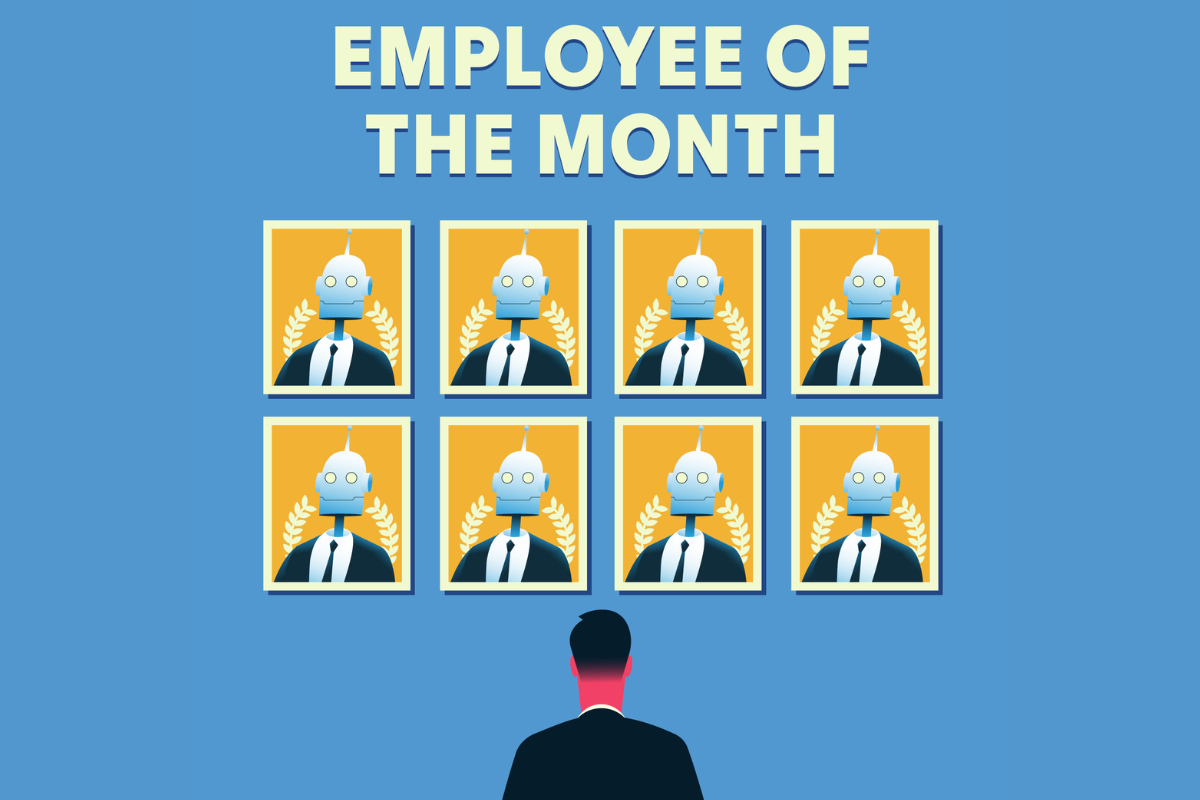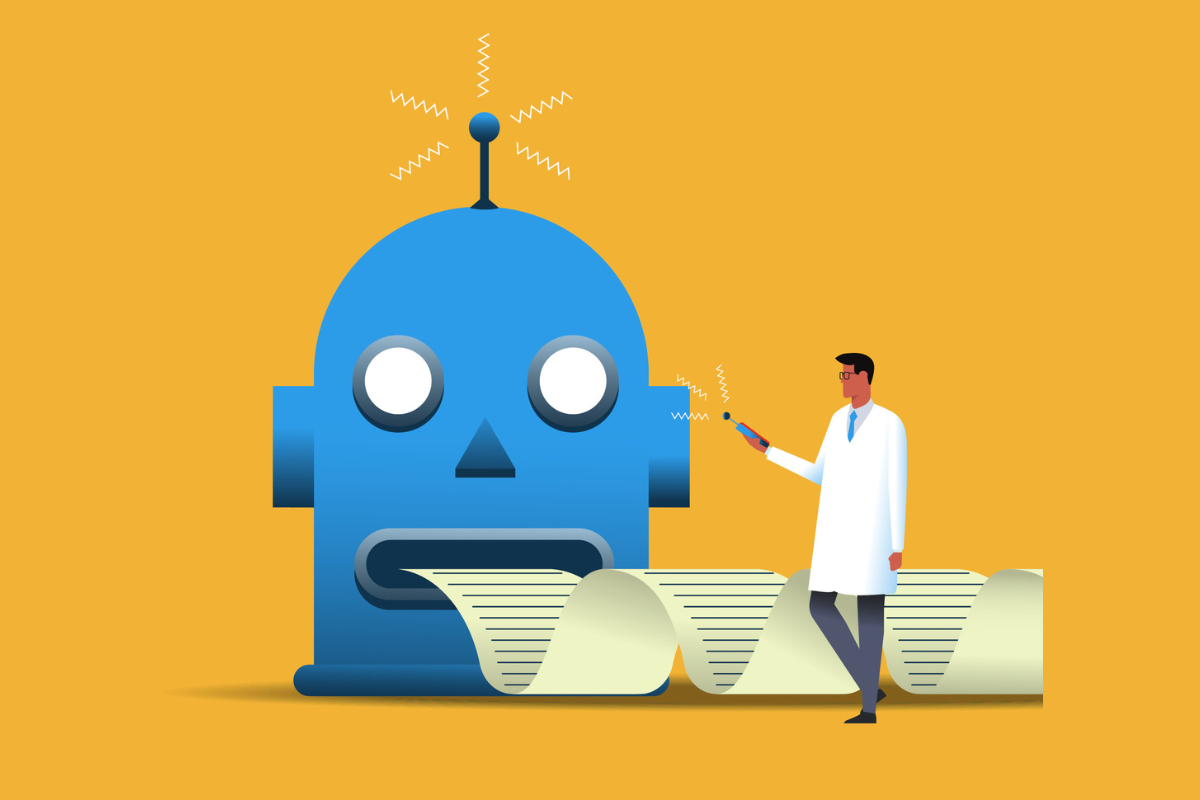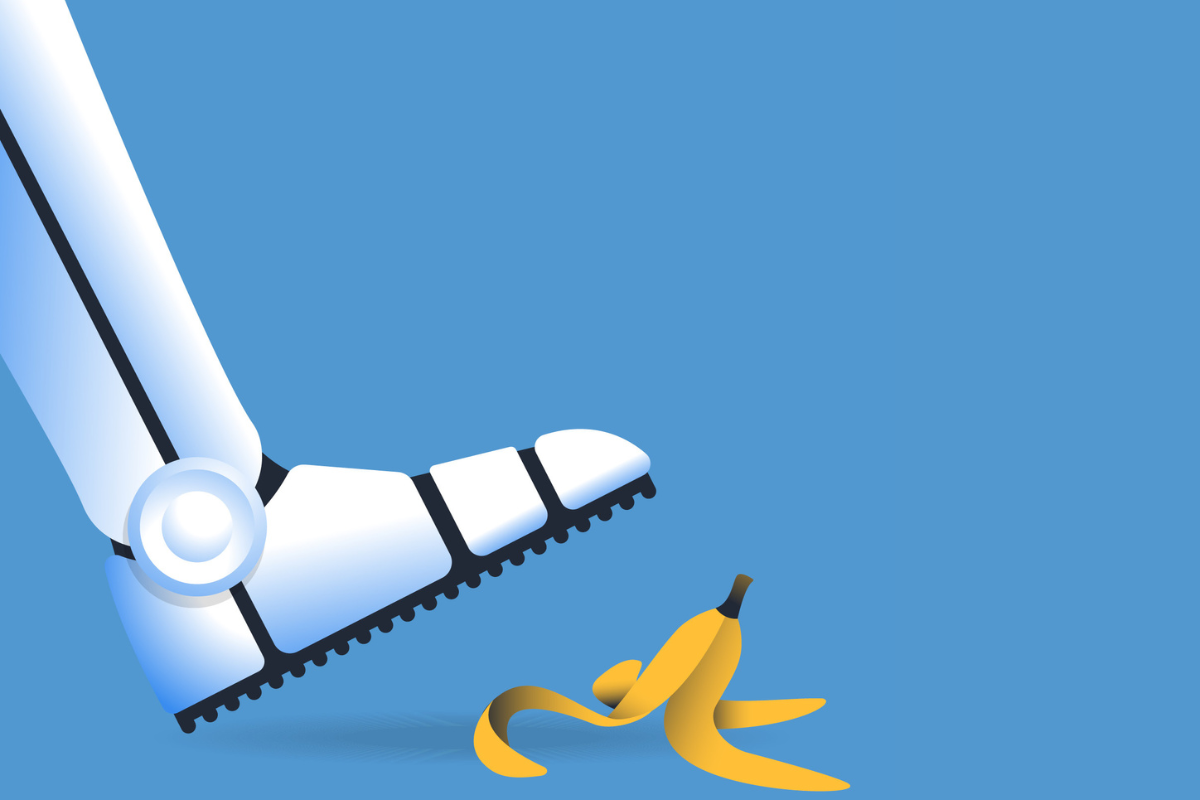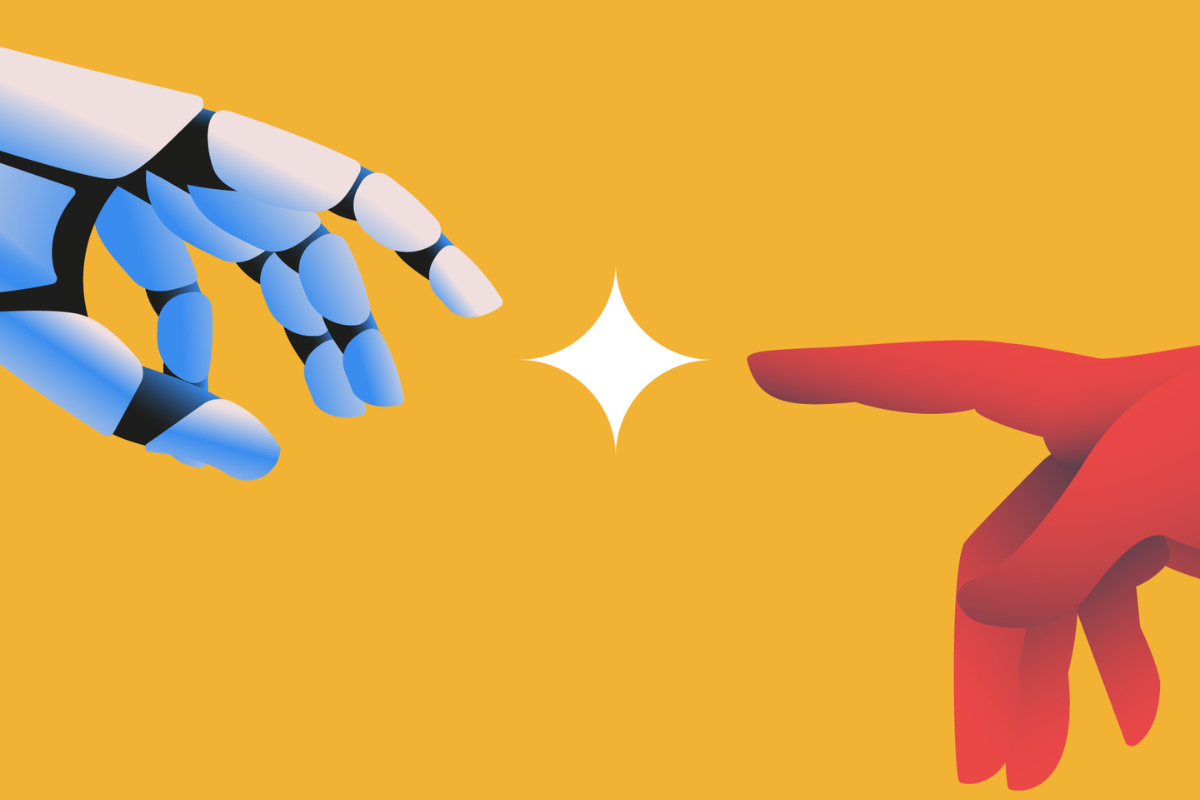AI may seem to be the new trend in the business world now, but we’ve actually had AI for a long time – albeit in a galaxy far, far away.
Remember Star Wars’ C-3PO? He’s the droid who is ‘fluent in over six million forms of communication’, yet he can’t make a connection with Han Solo. He’s got the same problems modern AI has: although he’s rife with high tech, he can’t interpret what’s being said in the moment. He can’t understand nuance and he can’t elevate communication.

No-one denies that AI is revolutionizing the business world.
The conundrums facing CEOs aren’t very dissimilar. When it comes to the exciting emerging field of AI, CEOs face opportunities and challenges: mind-blowingly fast content creation, but also credibility-killing hallucinations and the risk of crippling a company’s ability to stand out from the competition.
No-one denies that AI is revolutionizing the business world. CEOs will have to keep up. But though the human content creation team of the future may be smaller, you shouldn’t be ready to jettison those guys entirely. The eye, mind and heart will be more important than ever.
Keeping a close watch
Thirty years ago, the iconic comic strip Calvin & Hobbes wryly predicted the rise of AI. Six-year-old Calvin put a cardboard box over his head, called himself the ‘world’s most powerful computer’, and challenged his mother to ask him any question. When she asked if he’d cleaned his room – hardly a complex question – his response was what you’d expect from a kid getting out of chores: “System error … delete question and try again.”
It sounds funny, but even with today’s advancements, AI sometimes acts more like Calvin than we’d expect. ChatGPT’s initial launch in 2022 didn’t include citations to original sources, and it didn’t have access to information within the prior 18 months.
The AI system that promised to be the future of information and work couldn’t even reassure you that the facts it was citing were real – a problem for leaders who may consider relying on AI for investor presentations, legal briefings and other critical documents. One United States attorney found himself in hot water when a judge discovered that portions of a ChatGPT-generated document presented in court were totally made up.

Someone’s got to mind that wheel, or else it’s useless at best and a careening disaster at worst.
Even AI applications that are programmed for historical knowledge can’t always get the facts straight. Google’s Gemini disaster struck early in 2024 because the program was trying so hard to add racial diversity to historical events that it conjured up black Nazis and female popes. And a 2017 study showed that AI systems can have programming biases that result in an inaccurate analysis of women and people with darker skin.
A human expert at the ready to check these things is a non-negotiable.
It’s true that machines and software can make our lives easier – that’s been the case since the caveman perfected the curves on his stone wheel. But someone’s got to mind that wheel, or else it’s useless at best and a careening disaster at worst. Likewise in the present day: the more businesses and content creators integrate AI into their operations, the more they’ll have to invest in keeping a close eye on it.
Humans understand nuance
Tell a human not to think about an elephant, and you’ll guarantee that it happens. The same is true for AI – except that 99 times out of 100, a human who is thinking about an elephant won’t actually put it on paper if he isn’t supposed to.
AI, on the other hand, can’t help itself.
Technology has a long history of foibles, from the mundane to the catastrophic. In my line of work (publishing), it’s not uncommon for a word processor to try to ruin your work, like when it’s wrong about subbing: it’s for its (mundane), affect for effect (intermediate), or pubic for public (that’s a pubic – er, public! – relations disaster). Savvy prospective customers and investors will notice these things, and they’ll transfer questions about the reliability of your copy to your product or service.

Technology has a long history of foibles, from the mundane to the catastrophic.
In the present day, this sort of slight miss is magnified, because AI is about much more than failing not to draw an elephant. Consider driverless vehicles – and we’ll set aside for now the risk of a fiery robot-induced death. Importantly, if less colorfully, AI drivers have major trouble coping when a human makes a typo on the intended address, and now your pizza – or your sensitive prototype – is going to Mississippi instead of Minnesota. Your human delivery driver can handle this sort of mishap much more effectively.
Then, to return to the theme of fiery death, there’s Skynet, or the AI at the heart of the Terminator movie series. A fully capable generative AI, Skynet could do almost anything – except handle nuance. Instead, Skynet’s relentless devotion to cold logic led to an unconventional route to world peace: kill all humans. That might solve a problem, but it’s certainly not a human solution.
We’re not at the Skynet phase yet, but fiction can be instructive when you consider how to run your business. It’s crucial to have human beings who understand the nuances of language, from double-meanings to regionalisms to dialects and beyond. Your employees can know their neighborhoods, or their areas of expertise, in a way robots can’t touch. Even in industry, a robot can make coffee, but it takes a skilled barista to make that perfect monogram to celebrate a customer’s wedding anniversary.
This is where a company can really outshine the competition – but not if a tone-deaf robot is unsupervised in the driver’s seat.
Standing out
But let’s forget all of the above for a minute: all the bugs have been fixed, and you have the perfect AI. Well, great – and so do your top competitors, and eventually everyone else. So much for your stuff standing out.
But this is where the human being comes in. AI can write copy in the style of Yeats, but only a human would have actually read Yeats and be able to use a witty reference in an ad.

If robots are replacing everyone, then they can replace CEOs too.
Having worked with technology my whole career, I can’t say I’m confident that we’ll ever have the perfect AI. But even if we do, there will still be a place for the human writer. Maybe he’s a consultant or an assignment editor, with tech filling the role of copywriter.
Regardless, the recipe for success will come back full circle – in this case, to who has the best management team. And I won’t be surprised if the best writer-managers find the AI too cumbersome to use and petition you to toss it. That might be how you stand out.
The C-suite legacy
The transition to technology and robots has beguiled content-creators for hundreds of years. The I, Robot short stories by Isaac Asimov explore if machines can in fact be conscious. C-3PO and R2-D2 are full blown movie characters, complete with memorable lines and snappy dialogue with their human counterparts. And even Skynet has some humanity – it wants world peace, even if its methods cause real human skin to go white.
That’s why humans will always be part of the legacy you leave at every company you lead. If robots are replacing everyone, then they can replace CEOs too. But I think most people will admit that a company with a Henry Ford or a Steve Jobs or an Elon Musk at the helm has a lot more spark, personality and cultural relevance than a franchise reduced to robots spewing out a preprogrammed, prepackaged, plastic future.
The heart of content is the human touch. That’s why AI can only add to, and not replace, the value humans bring to other humans. And it’s why the best CEOs are excited at the chance not to replace people, but to elevate them to be better people, doing better things.







